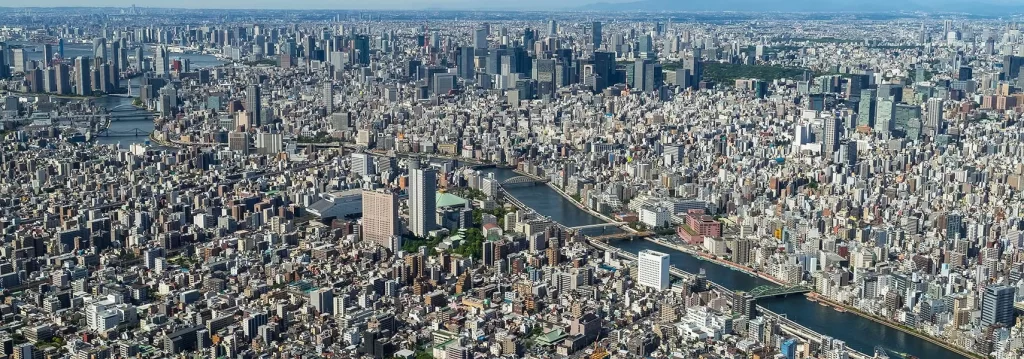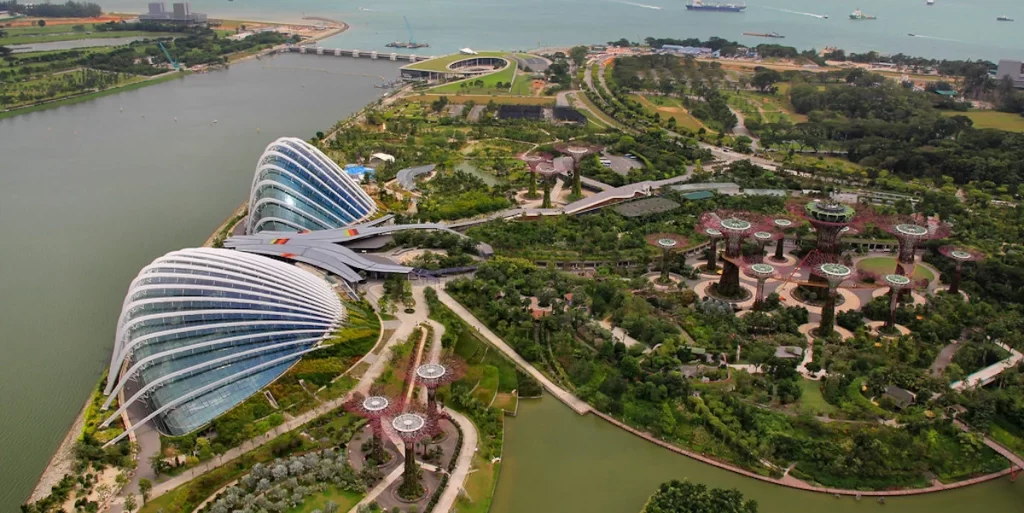Contents
- 1 Defining the Megalopolis: More Than Just Metropolises
- 2 Urban Planning and Infrastructure in a Megalopolis
- 3 Economic Powerhouses: The Role of Megalopolises in the Global Economy
- 4 Cultural Melting Pots: Diversity in Megalopolises
- 5 Challenges Facing Megalopolises
- 6 Sustainability and the Future of Megalopolises
- 7 Technological Innovations Driving Change
- 8 The Social Dynamics of Megalopolises
- 9 The Role of Governance in Megalopolis Development
- 10 Education and Workforce Development in Megalopolises
- 11 Healthcare Systems in Megalopolises
- 12 Public Safety and Security Concerns
- 13 Housing and Urban Development
- 14 Transportation Innovations
- 15 Waste Management and Recycling
- 16 Green Spaces and Urban Biodiversity
- 17 The Path Forward for Megalopolises
- 18 Author
Megalopolis, distinguished by a large number of people and extensive urban sprawl, is “the apex of city-building development and modern civilization”. These urban leviathans are not just enlarged cities but complicated matrices of cities and their satellite suburbs that merge with one another- forming “a seamless economic and social unit”. This paper explores the rapid development and new directions in which major cities around the globe are advancing.
Defining the Megalopolis: More Than Just Metropolises
Megalopolis is a phenomenon that transcends the scale of a traditional metropolis due to being composed of several “main cities” and “satellite cities,” as well entire surrounding areas of secondary cities. Introduced by geographer Jean Gottmann in 1957, it represents the level of urbanity and population size that gives rise to a new form of geopolitical and socio-economic entities. BosWash, a conurbation that extends from Boston to Washington D.C. in the United States, is a vivid example of a megalopolis.
Urban Planning and Infrastructure in a Megalopolis
The infrastructure is the backbone of any megalopolis. Due to the complexity and demand of such urban areas, new, innovative approaches in the field of transportation, living, and public utilities have been applied. For instance, megalopolises are the first to implement new rapid transit systems, smart city technologies, and eco-friendly buildings. As a result, megalopolises are the leaders in urban and environmental life and lay down the development path for other areas.

Economic Powerhouses: The Role of Megalopolises in the Global Economy
In addition, most megalopolises are economic engines of nations. Their contribution to GDP is usually one of the highest in the country. Megalopolises are centers of international business, finance, technologies, and culture. The abundance of human resources and capital ensures attractiveness and accessibility for MNCs, corporations, and startups. It is critical to shape national and global economic developments.
Cultural Melting Pots: Diversity in Megalopolises
The sheer size and scale of a megalopolis often make it a melting pot of cultures, ethnicities, and religions. This diversity is reflected in the urban culture, cuisine, festivals, and day-to-day social interactions. Cultural institutions like museums, theaters, and galleries thrive in these settings, fueled by the diverse populations that support and engage with them.
Challenges Facing Megalopolises
Despite their growth and innovation, megalopolises face significant challenges. Urban sprawl can lead to environmental degradation, while the density can exacerbate issues like pollution and traffic congestion. Additionally, the rapid pace of growth often strains infrastructure and can lead to disparities in wealth and living conditions among different urban areas within the megalopolis.
Sustainability and the Future of Megalopolises
Sustainability is an issue that needs to be solved if megalopolises want to develop during the 21 st Century. Most city planning projects aim at providing more places for greenery and sustainability in transportation decisions in the form of low-carbon transport. Moreover, megalopolises use innovative but feasible projects like vertical farming, renewable energy projects, and water recycling systems that help minimize the environmental damage done by human activity.
Technological Innovations Driving Change
Technology plays a pivotal role in shaping the development of megalopolises. From smart grids managing energy use to AI-driven traffic systems reducing congestion, technological advancements are integral to solving urban problems. The integration of IoT devices and the use of big data help city planners make informed decisions that enhance efficiency and quality of life.
The vast and varied populations of megalopolises contribute to complex social dynamics. Issues such as housing affordability, social inequality, and access to services are critical areas of focus. Urban policies that promote inclusivity and equitable growth are essential for maintaining social stability and harmony in these densely populated areas.
The Role of Governance in Megalopolis Development
Effective governance is vital for addressing the complicated problems associated with a megalopolis. Due to the instability of population growth, infrastructure development rate, and fluctuations in economic conditions, governance in a megalopolis should have mechanisms for the quick adjustment. In addition, it is often necessary to utilize the collaborative governance framework that involves the action of multiple stakeholders including governmental institutions, private enterprises, and civil society to address numerous issues effectively.
Education and Workforce Development in Megalopolises
Education and workforce development are pivotal in sustaining the economic and social vitality of megalopolises. These urban giants are often home to some of the world’s leading universities, research institutions, and think tanks. They attract global talent, fostering a competitive atmosphere that drives innovation. Additionally, vocational training and continuing education programs are vital in equipping residents with the skills needed in a rapidly evolving job market.
Healthcare Systems in Megalopolises
The healthcare demands in a megalopolis are immense due to the high population density and the diversity of health needs. Advanced healthcare systems in these regions are characterized by their scalability and the integration of cutting-edge technology, such as telemedicine and electronic health records. These systems aim to provide equitable and efficient healthcare services to all residents, regardless of their economic status.

Public Safety and Security Concerns
Public safety and security are paramount in ensuring that megalopolises remain livable and attractive to residents and businesses. The complexity of public safety in such dense urban environments requires sophisticated, data-driven law enforcement strategies and a focus on community policing. Surveillance systems, predictive policing algorithms, and emergency response initiatives must be continually refined to address the unique challenges of these densely populated areas.
Housing and Urban Development
Housing is a critical issue in megalopolises, where space is at a premium and the demand for affordable housing continues to rise. Innovative housing solutions such as mixed-use developments, high-density apartments, and subsidized housing projects are necessary to accommodate the diverse population. Moreover, urban development must be carefully planned to balance residential needs with commercial and recreational spaces, ensuring a high quality of life on situstoto.
Transportation Innovations
Megalopolises require robust transportation networks to ensure the smooth movement of millions of people daily. Innovations in public transit, including high-speed rail systems, bus rapid transit (BRT) lines, and sustainable modes of transport like cycling and electric scooters, are critical. Additionally, the integration of technology to streamline traffic management and improve the efficiency of existing transportation infrastructure is vital.
Waste Management and Recycling
Effective waste management systems are essential in megalopolises to prevent pollution and maintain sanitation. Innovative approaches to waste reduction, segregation, recycling, and reuse are necessary to manage the vast amounts of waste generated. Policies encouraging reduction in waste production and promoting recycling activities can significantly impact the ecological footprint of these urban areas.
Green Spaces and Urban Biodiversity
Preserving and enhancing green spaces is crucial in improving the livability of megalopolises. Parks, riverfronts, and urban forests not only provide recreation and relaxation spaces but also play a vital role in improving air quality and reducing urban heat. Initiatives to promote urban biodiversity through the creation of green belts and the preservation of natural habitats help maintain ecological balance within these vast urban landscapes.
The Path Forward for Megalopolises
The megalopolises growth and development into the future bring forth an array of potential and opportunities. They require innovative technologies, sustainable practices, and inclusivity to realize vibrant and dynamic urban giants. By integrating efforts from all sectors, megalopolises will foster sustainable living and resource use into the future, critical to setting an example for future living in cities for the world.
Megalopolises are the frontier of living in the city, and the future of the urban lifestyle might offer a sneak peek of the megalopolises’ future. Although the future lives in the city pose massive challenges, it also sets the pace for sustainable living in urban areas, where the cities now face the climate challenge and the new era.
Also read: Thailand Triumphs: Discover the Spectacular Beauty and Vibrant Culture of Asia’s Paradise



